Hypothetically thinking about Apple Vision Pro and what it offers for nearly $4000 in hardware might leave you concerned that Apple won't find enough buyers to support the creation of sufficient software and immersive content for it as a platform. Having used it, I think I can say that's the wrong thing to be worried about.
Apple Vision Pro is not cheap.
But the real question is, will it be "expensive" like the $6,995 LaserWriter printers Apple introduced in 1985 to wide success in launching the Macintosh as an essential tool in desktop publishing, or will it end up more like the cheapest $699 Newton MessagePad that failed to find enough interest to sustain the development of useful Newton software in the mid '90s?
Adjusted for decades of inflation, the LaserWriter would be comparable to a nearly $20,000 investment, or five Vision Pros. The Newton would be close to $1500, making it not so different from a higher end iPhone.
That indicates it's not so much the price tag of a device but rather than apparent derived value that's important. LaserWriters enabled people to start businesses; Newton was more of an unfinished toy to dabble with.
Before Vision Pro was released, I wrote that its "killer app" driving adoption needn't be one hit app, but rather would be a mix of features much like the iPhone of the mid 2000s, or Apple Watch in the mid 2010s. Viewing immersive content, video messaging friends, and interacting with a new class of "spatial apps" would collectively work together to deliver enough value to drive adoption.
I also noted, "Vision Pro won't replace the Mac as the way we do all of our work. The notion that we will spend all of our time tethered to a headset rather than sitting at a PC seems quite absurd."
Having now had the opportunity to use Vision Pro, I might have to correct that observation. Just by itself, I think watching immersive TV and video content will be enough to drive adoption.
Will people sit with a Vision Pro on their face all day long? I sure hope not. But most people also didn't spend their days watching Laserdiscs or VCRs, or driving their new car around in circles just because they'd dropped a lot of money on it.
I think Vision Pro will serve as a presentation device, an interactive explorer, a home theater, a shopping device, a communicator and meetings system, and lots of other short term functions that deliver some real value.
Just like an iPad, there's a degree of customization with Vision Pro that attaches it to a primary owner. But a family can also share one, although it's currently limited to a single iCloud account, and eventually buy more than one over time. Hopefully, sharing tools will become much richer over time, as the current sharing mode is quite limited.
I think doubters will be surprised at the number of people opting to try Vision Pro, in contrast to the tepid level of interest we've seen with comparable "virtual/augmented/mixed reality" devices that have ranged from specialized gamer gear to enterprise appliances for mostly training purposes.
Over time, tech products naturally do become cheaper and better as production technology advances. But think back to every other recent product Apple has made: the first version of the iPod, iPhone, iPad and so on would not have been better nor more successful if it had targeted a significantly lower price. It would have instead just cheapened Apple's brand.
Every historic Apple release would have been forced to scrub some very essential features that served to make the product notably better than alternatives. So it is with Vision Pro; scaling its ambitions down to make it cheaper would radically erase major elements of its overall value and the quality of its experience.
Just like the LaserWriter, Vision Pro's steep price will cause potential buyers to think long and hard about whether they really want to invest in this technology, likely leading them to justify its price by doing something of significant value with it: developing new apps, documenting their family, creating art. Early Vision Pro buyers should similarly be committed and excited about it.
If Apple targeted a much broader audience with a significantly cheaper price point the way its competitors have with VR, its first generation of early adopters would be full of casual buyers who were only buying it for a trial run before abandoning it on the shelf and telling their friends they paid too much for something that wasn't really worth it. Apple wants Vision Pro to be a LaserPrinter, not a Newton.
Motorcycle for the Mind
The initial experience of just putting on Vision Pro and setting it up is magical. This is due to a lot of factors. Spectacular resolution delivered by its micro-OLEDs; blazing raw computing power thanks to its M2 Apple Silicon from a fast MacBook paired with a specially R1 chip for handling real world data from its cameras, sensors and mics; really impressive industrial design; and most impressive to me, the tremendous experience efforts Apple invested in creating an all new Human Interface for driving navigation with your eye focus and hand gestures.
It's not a clunky appliance you have to run wires across your living room to use. There isn't an extended learning experience, nor the level of user interface complexity that many systems have that requires all that training.
Much like an iPad, you can pick it up and immediately begin using it and see the value in it quite quickly. Way back 14 years ago when the iPad came out, critics snarled that it was "just a big iPod touch," a suggestion that it it should have been complicated with the "power" of a PC. Its very simplicity was what sold millions of iPads and turned Apple from a niche computer maker into the world's largest supplier of tablet systems.
It certainly does take some effort to get used to an entirely new user interface delivering an immersive experience. Back in 2017 when I moved from a Home button iPhone to iPhone X, my brain kept thinking about pressing a button for months, despite the elegant new efficiency of its swipe gestures. Within minutes, Vision Pro had me comfortably navigating around in a wildly new but intuitively familiar world. It delivers what feels like a perfect blend of fresh newness, where controls and pointers vanish and you just "think" about what you want to do, with familiar concepts that ground your experience.
It's like getting on a motorcycle for the first time, and experiencing the exhilarating feeling of flying down the road effortlessly fast, but feeling free and intuitively in control of this machine underneath you, adjusting your direction with invisible efforts that just slightly lean pressure on the handlebars. A nice motorcycle doesn't feel like a vehicle underneath you; it feels like your body gained the ability to move really fast on its own. Vision Pro feels like that for your consciousness: as fast as you want, anywhere you desire.
Vision Pro 1.0 is not without any flaws, of course. Sometimes you might look at the wrong control or it may register a click you didn't intend. You might have to stop and think about how to get back to the Home Screen (it's just like an Apple Watch) or how to change your settings (it's just like an Apple Watch) or how to call up dictation or Siri (it's just like an Apple Watch).
You might have to look up answers for how to do some really simple things like turn it off or perform a factory reset. That's what AppleInsider is for.
All new but deja vu
Look upwards, and no matter what you're doing, an iOS-familiar Control Panel appears with essential shortcuts you've never seen before but you already know what they do. Windows have an entirely new look but are also instantly recognizable, with controls you're seeing for the first time but immediately know how to use.
Vision Pro isn't just newness for being new, but a progression along lines we've been following every year.
We knew AR Kit on iOS screens was preparing us for a future of truly immersive Augmented Reality, but seeing it for real, everywhere around you, is spellbinding. It feels as if tapped right into your visual system, like an iPad is in your mind, and reaching out you could perhaps touch the graphics floating in front of you and casting a shadow on the floor.
When you do, your hand goes right into and thru the graphics. It's a computing environment that gets so close to your brain, you can't always tell where the hardware ends and the software starts. I've found myself reaching out to manipulate items because they seem so real. Conversely, there are games like Synth Riders where your own arm and hand gestures do control the action.
I've tried a number of VR devices before, and these have generally been positive experiences, marred by the inherent problem of being blinded to your surrounding environment and tethered to a powerful enough system to drive its visuals. Apple itself demonstrated an HTC Vive at the introduction of iMac Pro in 2017. The game on display was so involving I nearly fell down during its demonstration.
In both San Francisco and Berlin, the surrounding tech scene results in frequent efforts to present art or other visuals in museums and events using some type of VR helmet. Those brief trials seem to saturate rather than whet people's appetites for VR.
Like 3DTVs, stylus pen computing, tablets before iPad, and the heart rate monitors you'd once wear strapped around your chest, the last decade of VR felt like a presumptive stab at the future that was only really cool for about 15 minutes and then it felt good to be back in the real present and the almost futuristic thing was thrown into a drawer.
Putting on Vision Pro is different due to the significant advances Apple has devoted to visual navigation, display quality and performance that make the wearable visual system vanish away, leaving you in a computer generated world that's responsive to your surroundings and instantly takes you back to reality when you need it. When fully immersed though, the experience is striking.
It's so captivating that it can be a bit annoying when the system begins revealing your surroundings if you move around too much, like being rudely awaken from a dream. But it's this very system of alertness that gives you confidence that you're wearing a system that prioritizes your safety over your entertainment. It plugs you into a connected world without tying you up and hiding you from reality entirely.
The authenticity of immersive video
Being instantly surrounded by an immersive environment is cool enough, but playing back your own photos, Memories, and Panoramas is just wondrous. What I didn't quite prepare myself for, however, was the new level of immersive content created specially for Vision Pro.
I'm not even talking about apps and games, but rather just video content captured in "immersive video" at extremely high quality. Apple has provided some examples in Apple TV+, including a behind the scenes' studio session with Alicia Keys, a dinosaur CGI short film, an adventure episode set in Norway, and a Wildlife clip that starts with a visit to a rino preserve.
The last example is just a documentary following a woman describing how she was got involved in saving endangered animals from poachers in South Africa. But watching it on Vision Pro, it takes you into the scene, as if the fourth wall just vanishes and you are in the production.
You can choose which characters to look at on either side of you, and the animals walk right up to you, as if you could pet them. I was so overwhelmed I was brought to tears. My mind raced to contemplate what kinds of new things this technology could enable, even without any interactivity or computing layer at all.
Watching Alicia Keys from inside a recording studio, interacting with other performers while singing and playing instruments felt like a rare glimpse into another world. If it were edited into a standard TV show, it would have not been very interesting to me. But with limited editing shot from a few stationary 3D cameras (you can see them in the room), you feel privileged to feel invited into in a raw and authentic space.
Viewing these specially filmed immersive videos, I found myself interested in stories and events that wouldn't really hold my attention if they were formulaically shot in the briskly paced editing of standard TV, where it's hard to tell if you're watching something real or just sitting through some contrived, scripted content posing as "reality TV."
Immersive video transports you into a world where there's more to look at, your attention can wander around, and you feel as captivated and present as you would in real life. You feel like you can tell if people are acting or just being themselves— or at least it's much more convincing. These clips didn't make me feel like I was being "entertained," but rather that I was really there seeing things for myself.
The very meaning of television is literally "distance seeing," bringing far off events right into your living room. In my lifetime, the TV grew from an increasingly huge CRT into a flat screen, then both shrunk up into the portable mobile devices we carry as well as growing into incredibly large and thin panels. But TV has inherently remained a world behind glass. Not anymore.
Surrounding you with playback, Vision Pro shifts the whole model of television from a display depicting some highly curated sequence of actions and places, to an enveloping world where 3D isn't just a gimmicky "sword pointing right at you" out from the screen, but rather, the entire world you are inside of, where the action is occurring around you and the place is your reality. This is much more than I had anticipated, even already owning a VR headset.
The reason why most broadcast TV largely shifted from daytime dramas and sitcoms in the 80's into so-called "reality TV" shows was ostensibly because people wanted to experience real subjects and situations rather than contrived, moralizing stories acted out by stereotypical characters. But the real reason was that it was far cheaper to crank out lots of lightly edited content that didn't need a strong plot or production values.
That's good news for Apple and its production efforts in immersive video, because this new kind of content can be created rapidly and at lower costs. No need to set up trashy characters in a cringe situation and tightly edit their arguments to string audiences through as many ads as possible.
With Vision Pro, you can offer real experiences to see and observe actual locations where reality is occurring. Whether to relax, to see the world, to go places you're usually not allowed to enter, or to get close to celebrity figures you admire, this kind of enveloping video expands your world without using you as a product to advertise to. I'd pay for that, and get time back from TV to do other things.
Immersive Photos
Apple is no stranger to creating its own new formats. iPhone 4S introduced Panorama capture, which borrowed from the company's own legacy in developing panoramic VR scene stitching with QuickTime VR in the early 90s. Back then, panoramic creations involved development tools, special camera lenses, and desktop software. On iPhone, it became an effortless mobile camera feature.
The same way that Apple's animated Live Photos bring your images to life in Photos and when displayed on Apple TV, all the Panoramas you've captured since 2011 are now something you can really experience and enjoy on Vision Pro.
A big part of the uniqueness of the Vision Pro experience is its tight integration with iCloud and the gear you already own. You can wear AirPods with for enhanced sound. It can pop up notifications from the apps you're already using and familiar with. Apple TV and Apple Music look predestined to provide valuable things for Vision Pro to experience.
The primary drawback is that wearing Vision Pro inherently becomes tiring. In that sense, it's the opposite of Apple Watch, where you strap it on virtually all the time, everywhere but only notice it for brief interactions. Vision Pro is a tool you take out and become intently involved with for an intense session that exhausts your emotions and intellect at once, and then you want to give yourself a break.
I think the fears of people getting lost in Vision Pro and addicted to the same level as their iPhone screen are overblown. Twenty years ago, I loved riding motorcycles. They were exciting tools that gave me freedom to get around San Francisco and not suffer from its parking or traffic.
As much as I loved riding around when I need to, I didn't just drive around town in endless circles for hours just to do so (at least not after the first few months of blissful honeymoon). I think that's how people will use Vision Pro as well.
20 years of CES TV features in a tiny box
Across the last decade or two, the tech industry outside of Apple has been working to deliver a variety of TV display innovations that could induce the public to buy their products for more than the "few hundred dollars" that a basic HDTV panel can ask. What is the future of television? Apple pundits have long imagined the company would release some super expensive HDTV set.
Obviously, it never did.
Leading TV makers from Sony to Samsung to LG and many others have tried to introduce 3DTV sets, super large and very high quality TV display technologies, flexible TV screens that can roll down out of sight, and even transparent TV screens that can change from a display into a clear window, as desired. There have also been lots of efforts to deliver some sort of projection system that can deliver bright, vivid displays capable of covering an entire wall, either with a projection screen or simply using the wall itself, with minimal shine and flicker.
Some projectors are even bright enough to be used without totally darkening the room first. You can even find projectors that have been shrunken down into a portable unit.
Apple's Vision Pro delivers all of those things at once, with much less size, lower weight, fewer installation concerns, and at a vastly lower cost than any assortment of large, state of the art solutions trying to deliver a few of those goals.
Imagine an incredibly large TV with the highest resolution you've ever experienced. It takes up no space in your room, and requires no installations on the wall or ceilings, is entirely wireless and runs off a pocket-sized battery. You can use it (and take it) almost anywhere.
Its massive screen becomes translucent when it needs to, then returns to being fully opaque and vibrant, as you like, with the turn of a control. This huge screen experiences no physical wear from rolling up and down, and its size and positioning can be adjusted effortlessly by looking at controls and moving your hand.
Unlike 3DTV sets — with or without 3D glasses — it requires no special seating orientation to work. You can slouch, lay back comfortably with your head tilted to the side or sprawl backward with your eyes facing the ceiling. One of the deal-breakers for even the best 3DTV panels was that as soon as your head wasn't perfectly held in specific vertical plane relative to the set, the 3D effect was lost.
Not so with Vision Pro, because it doesn't involve the troublesome technical variables of a display moving relative to your eyes and face. It's on your face.
But Vision Pro isn't just the best television experience hardware. In fact, that's only one of its features. It's also a computer, a gaming platform, and an immersive FaceTime video messaging system.
So Apple Vision Pro isn't just 20 years of various attempts at TV features, it's also an immersive iPad world, along with the kind of interactive attempts at VR and Mixed Reality that Meta, Microsoft, Google, Samsung and many others have struggled to bring into the mainstream.
Oh no, Apple is delivering a premium
If you are old enough to have experienced Steve Jobs initial unveiling of iPhone over 15 years ago, you might be reminded of the surprise the audience felt in realizing that the three products he announced Apple would be introducing that day— a widescreen video iPod, an interactive Internet device, and a mobile phone— were actually all combined into one. You might also recall the nervous laughter of competing companies all taking turns giggling at the prospect of the $650 iPhone going anywhere.
At the time, Microsoft was struggling to find attention for its subsidized, $150 Windows "smartphone" built by Motorola. As its price indicated, it was a terrible phone, and having some sort of Windows on it did not make things better.
Sony, Nokia, and others also had $1,000+ mobile devices that put together various sets of features that weren't popular beyond tiny niches of interest. Their various non-Windows phone software also made even their expensive devices an extremely undesirable experience.
To hear the same tired observations from tech journalists today, that Apple is targeting a quite high premium price point that isn't generally affordable by the masses, is also puzzling because Apple already owns the premium smartphone space in the United States, as well as in Europe and even dominates the landscape in China, where most American tech companies can't even get a foot in the door.
Apple didn't do this with $150 iPhones. Its most popular iPhones are its newest and most expensive versions, with prices ranging from $1,000 to $1,500, price points that were absolutely unfathomable when iPhone debuted.
Apple also owns the premium tablet market globally, the premium smartwatch market everywhere, and has a commanding presence with Apple TV, AirPlay, and CarPlay across not only its own offerings, but on virtually every TV set, home theater, and new car sold apart from a short list of holdouts. This isn't because Apple controls all the industries with the kind of monopolistic OS position Microsoft wielded in the '90s, but rather because its products are so good customers demand them from everyone.
The most popular Androids have always looked exactly like the last iPhone Apple introduced, every year for the last decade and a half. After so many years of trying to compete by being cheap, the most notable success of any kind by Android makers has been to copy Apple in selling more expensive phones that could turn a profit.
Given that Apple literally owns the markets for affordable mass-market phones and so much else, why would it be surprising that the company would introduce a new tier of premium luxury that delivers the future at a price the past could not imagine?
TVs back to the future
TVs were historically relatively expensive gadgets, yet the insatiable demand for leisure entertainment meant that decades of consumers willingly spent their money on home TV sets anyway, rather than spending less to go to the movies, travel the world, and do other things that TVs brought right into their homes to enjoy.
Most consumers also weren't spending $100 every month on movie theaters or sporting events, yet eventually found themselves paying that much for cable TV packages with HBO, ESPN, and other specialty content they could enjoy anytime from the comfort of their couch.
While there are lots of premium TVs that cost more than Vision Pro, mass production TVs have become nearly a commodity. Almost all new TVs bundle in "smart" features that are really surveillance advertising that monitors what you watch and reports this back to subsidize their production.
Cheaper TVs are nearly all loss leaders. They make no profit and only exist because they give advertisers information about you.
This reality isolates Apple from the low end, because cheap TVs and TV-glasses are not going to be able to subsidize high quality VR electronics at an affordable price just using surveillance advertising. Ads couldn't quite float tablets. Consumers are also increasingly aware of the privacy costs of this model.
This effectively allows Apple to deliver a high quality product at a steeper price point, enabling it to usher in the future faster.
But will enough people buy Vision Pro to allow Apple to stay in business? Perhaps Apple would find it difficult to do this if it didn't already have over $100 billion in other quarterly revenue delivering healthy margins.
Apple could afford to continue to develop Vision Pro even at break even, because like iTunes, this new device and its expanding ecosystems of content pull consumer interest toward Apple's existing Mac, iPhone, iPad, AirPods and other devices. It helps ensure that VR and related immersive concepts work with Apple products, rather than being developed exclusively for a surveillance advertising company like Meta.
But Vision Pro isn't just a defense against what Meta is doing. Much more so, it's a halo project that gives Apple an exciting frontier, and creates new interest in not just the hardware to create Vision Pro apps and content, but also the Services that Apple already sells: notably Apple TV+ and Apple Arcade.
The excitement of immersive TV
One of the most difficult tasks in introducing any new platform has not really been the initial hardware cost as much as delivering enough content for it. New consumer electronics weren't held back by the price of the device but rather how much software existed for it.
From Laserdisc to Betamax and the early world of personal computers brands, the biggest constraint wasn't that you had to pay a lot for the hardware, but whether or not you could find enough content and software for it. Cheaper devices sometimes enjoyed a brief splash of apparent success before being abandoned by consumers due to lackluster content.
One of Apple's competitive strengths is understanding the value of software. I've seen a number of people point out that Apple's efforts at building retail stores in the days of iPods created the perfect place to launch iPhone and then Apple Watch (and now Vision Pro).
But equally important seems Apple's parallel efforts to build a software store, evolving from the iTunes Store to the App Store and expanding into Apple TV+. Vision Pro not only has the expected App Store, but also has a place to show off new immersive video created for it. Behind the scenes, it has the production to build captivating content. It also has a partnership with Disney+ to open up additional immersive content.
Ensuring enough desirable, high quality content for Vision Pro would be impossibly difficult if Apple were relying on YouTube, Netflix, and Amazon to deliver immersive content for its new device. That thought brings to mind Bill Gates comment, when asked in the late '80s about developing software for Steve Jobs' competitive new NeXT system, "develop for it? I'll piss on it."
The future of software isn't going to be delivered from the pipes of the past. Apple built out its own content delivery pipes years before launching its spatial fountain of interactive, immersive content. Apple now has lots of really engaging and award winning content, in addition to having earned the respect of the industry and notable awards.
It won't have a problem finding interest in building immersive content for the future of television.
Big screen without the screen
If you already subscribe to Apple TV+ or Disney+, you can already get started with immersive content. The adware subscription content platforms from Amazon, Netflix, and YouTube are trending toward more advertising (and higher costs, at the same time, incredibly!) and so far, shunning Vision Pro.
But, fortunately there isn't much value in adding immersive 3D spatial video to their formulaic time-killer fare. Netflix, YouTube and so on is intended to be watched on a TV or perhaps a smartphone or tablet, not blown up to fill the room.
The type of movies and videos developed for these content platforms are standard TV formulas from the '80s, with innovations being more ads per hour than even Saturday cartoons on broadcast television back in the day. Even the best content is basic TV fare, where you're shown a series of scenes where you're being fed a story scene by scene, shot with a familiar editing pace.
With this content, your eyes have one thing to look at. The focus, perspective and camera movements tell your brain want to look at. It's not smart TV, it's dumb TV.
Netflix got started mailing out DVD movies, before transitioning to streaming. But it realized that the real money was in production, not distribution. It has since embarked on an increasingly high volume strategy of dumping out tons of content filler that feels like shovelware. YouTube started as DIY shovelware, and ad incentives have prioritized content length and monetization on mobile screens.
Immersive "spatial video" opens up an entirely new type of presentation, where you're enveloped by the stage of characters and their surroundings. Rather than having a constrained narrative of what to look at, you're free to focus on any of the characters in the scene that surrounds you.
This kind of presentation has been technically difficult to present before. Movies and TV inherently had to push all the action onto a flat screen. Even a very large 85-inch TV takes up a small area of your vision when seated comfortably opposite the panel on your couch.
What used to be sold as 3DTV before consumer apathy virtually took it off the market was the same set size, but with glasses that isolate what each eye is seeing. This resulted in the same display size, but conveying a 3D perspective that could make it look like you're watching a diorama rather than a flat screen.
It's difficult to want to experience this for more than about 15 minutes.
Wearing a VR headset allows stereoscopic visuals that surround you, but presenting these with enough resolution to look real is difficult and expensive. Typical VR headsets are like wearing a welding mask — they blind you to the outside world, on purpose, in order to deliver this convincingly surrounding effect. They also typically require tethering to a video game console or PC, meaning you're not only unaware of your actual surroundings but also have a tripping or stumbling hazard.
If they work to deliver the surrounding effect, you're left vulnerable and can only reenter the real world by pulling the headset off entirely.
Apple's biggest innovations here are game changers. Augmenting your virtual experience by passing through a broadcast of your actual environment synced up to the graphics means that you can choose how much or how little you're in this virtual world. The system can also instantly pull you in and out of it, rendering its graphics — like that enormous video screen — as translucent or even making them disappear entirely so you can interact with people around you or other things in the room.
Jumping into your memories
Viewing your Photo library on the iPhone you captured them is good, a larger canvas of an iPad or Mac is better, and viewing them on a big screen with Apple TV can be even better — although it may be harder to search and find what you want to look at without iOS's search tools.
Vision Pro gives you an exponentially larger canvas for perusing through old pics. In particular, it turns your Panorama captures into astounding worlds you can wrap yourself with.
It used to be easier to capture Panoramas than to know what to do with them. On a typical screen, they're too wide to view in scale, and it's awkward to print them out in a useful way. They're perfect on the naturally wide display of Vision Pro.
Another great feature is Memories, which iOS has been creating for some time now. On Vision Pro, these feel like little packages of your experiences that are easy to run through, and I felt myself smiling to walk through them. Vision Pro and the new iPhone 15 Pro also capture 3D images or videos using its stereoscopic cameras.
The result looks a little like 3DTV — you see a box with depth like a diorama. They have soft edges and feel a bit like a CGI dream, as presented by Vision Pro. The actual 3D image you capture with the device is simply two stereo images, as depicted in Preview (below).
If you expand them into Immersion mode, they fill your whole view. This makes it easy to create compelling new immersive content of your own, and to share images of people and scenes to show off an area and what it "really" looks like, compared to just a flat photo from a particular angle.
After years of false starts with 3D captures on phones, video game handhelds, and elsewhere, it feels like there's much greater potential for valuable uses of dimensional photography on Vision Pro, in part because it's well integrated with Photos and iCloud, and makes it easy to capture and share images between devices. If the "best camera is the one with you," it will be especially valuable to owners of the newest iPhone, as you're unlikely to be wearing your Vision Pro all the time.
It seems like a lot of dads would be thrilled to capture family events wearing Vision Pro because that's what dads would do. And everyone else will cringe until they have the opportunity to view memories in depth, which are striking and enjoyable.
3D photos on handheld devices weren't too captivating and didn't ever take off. Having a system that lets you call up immersive and even 3D videos with Vision Pro feels like a different experience.
I don't think anyone will want to live in that experience, and it doesn't even seem like a good idea to try to have Vision Pro on for long periods of time. It does put pressure on your head and can get uncomfortable or tiring after some time. But when you choose to put it on, the experience is captivating and wondrous.
Photos and Panoramas also feel flattering and human, as the Vision Pro imagery feels more like a real world experience than looking at smaller, flat photographs where your brain has more time to look critically at details rather than being lost in the reality and memories related to an experience.
Think back to how much people used to spend on SLR cameras, film, and lenses back in the '80s, and then on camcorders and tapes into the '90s. Most of us have since moved to capturing events on iPhones, where it's effortless and free to share or post to social media.
All the costs of photography have been blended into the value of smartphones. Their increasingly better cameras with more features are a major reason to upgrade your phone on the regular. Vision Pro offers another way to view all your online cloud images, and a new way to capture a new kind of photograph.
I'll have to take more images in more places to get a feel of how valuable this is, but I don't doubt that some early adopters will be significantly swooned to buy one over the prospect of capturing depth movies.
Additionally, there are commercial reasons to have a 3D camera system to show off properties, merchandise and so on. Apple's done a lot of work here to make it easy to capture them, easy to view them, and easy to share them. It's also made it straightforwardly easy to build apps that showcase dimensional imagery and videos on its new Vision Pro.
Spatial productivity moves computing from the desktop to your view
This isn't a Mac; it's effectively an immersive iPad. It would be problematic to try to shoehorn desktop apps into an immersive world without cluttering up the experience to the point of being frustrating.
Already, Vision Pro puts a lot of controls in front of you, and selecting items by looking can get overwhelming. Watching a video in Apple Music, it can be initially hard to figure out how to make the window larger and stay larger, without inadvertently grabbing the wrong control.
Shopping in the App Store, you might get spooked that your glances will end up in an unintended purchase. Sometimes browsing through lists or swiping through albums requires more specific and dramatic gestures than seems necessary. I'm sure the interface will continue to be refined over time and as different types of users get a chance to offer their feedback.
Recall that when iPad arrived, a lot of Mac users were everything from disappointed to upset that iPad wasn't simply a touchscreen Mac. But from the omniscience of today, we can look back and be glad that Apple wasn't just lazy and sufficiently swayed by the crowds to give people the "faster horse" they were asking for.
Using an iPad is effortlessly simple, and erases so much of the complexities of a desktop personal computer, even if that means there isn't feature parity with the Mac. The end result has been a differentiated tablet experience that has been far more successful than other tablet, netbook, and touch PC offerings.
That makes it much easier to now see that Vision Pro should be a similarly simplified experience, not merely a PC with stereo visuals. The content of immersive video and personal photos and videos, as well as immersive apps and even standard iPad software running in the Vision Pro space, are all made the center of the experience, rather than trying to upgrade the legacy desktop into a spatial environment.
At the same time, the bundled apps — in particular Apple's Safari browser — are about as easy to use as on a iPad. Typing with your eyes will quickly make you want to rely instead on dictation or a Bluetooth keyboard. But your bookmarks and even passwords are there and everything seems to work as you'd expect.
That's nothing like the "browser" experience on a video game console or other non-PC device, where browsing the web is invariably a broken and clumsy experience with so much missing that it's impossible to make any use of it.
Spatial games
Vision Pro isn't an Xbox or Playstation. The downside to that is that Vision Pro gaming, like its other apps, are initially lighter, thinner and less sophisticated feeling than you'd expect from a dedicated game console.
At the same time, this also means games won't cost $80 and require you to devote hours of your life to learning a complex unique navigation system. Vision Pro is a gaming platform from the maker of iPad, so games are going to be quite easy to get in and out of, and cost something between nothing and perhaps $20.
As I noted earlier about Apple TV+ being delivered years ago with the apparent timing to create a volume of high value content ready for Vision Pro to use, Apple's parallel effort with its Arcade subscription offering means something similar for gaming.
Apple Arcade on Apple TV is not a rich nor wonderful experience. Trying to play games with the bundled remote is pretty clumsy, and even game controllers don't turn your Apple TV into something resembling a system built specifically to play video games.
That left me surprised to see some really fun and captivating games for Vision Pro already. They're simple, but easy to get in and out of, and they're fun to play. One is Synth Riders, similar to Dance Dance Revolution but played with your arms and hands. The graphics appear right in your view and are natural and fun to interact with.
There are also a variety of familiar titles that have been enhanced to be more captivating and involving on Vision Pro. It remains to be seen how deep gaming will get, but the advanced hand gesture support, visual navigation, much faster processor and graphics capacity, and inherent immersion of Vision Pro all makes it much more fun to play than Apple TV on your standard set.
The same factors play into how fun and useful other apps will be on Vision Pro. Apple TV always suggested that it could develop into a bigger, richer platform, but it felt like Apple viewed it as more of a hobby to see what developers might do with it. The reality has been that developers haven't done a lot with Apple TV outside of delivering easy to use streaming and broadcast content and party games.
Vision Pro already feels a lot more sophisticated than Apple TV; it delivers an iPad experience stretched to immersion, with a vast canvas and far more pixels, everywhere, than a tablet screen can offer.
More to come
I flew to the US specifically to try Vision Pro. I struggled through two canceled flights and weather delays that limited how much I got to put it through its paces before writing my first look. I'm struggling through some jet lag. I'm looking forward to see more of what third party developers have already done, and their plans for the future.
I'm also looking forward to exploring Vision Pro's FaceTime and Persona in more depth, along with the productivity angle posited by Keynote, Pages, and Microsoft's Office apps, as well as screen mirroring from a Mac.
It feels pretty clear to me that some concerted efforts to denigrate Vision Pro are pretty baseless. They share so much in common with the disparagement of iPhone as too expensive and not complicated enough, the same things that were repeated about iPad, Apple Watch, AirPods, and so on that it's embarrassing to read that there's been virtually no innovation in tech media thinking across all these years.
That's good news for Apple, considering that when the tech media is enthralled with your product and has nothing bad to say about it, it really means it's about to eat the pavement. There were no desperate attempts to associate Google Glass or Cardboard or Microsoft Surface or HoloLens or Samsung Fold or any number of forgettable products with "fentanyl" or deadly social ills or any of the word salad that's been churned out by journalists contorting themselves in exaggerated ways to try to look balanced and really just failing to interpret reality straightforwardly.
A final warning: if you decide to buy yourself a Vision Pro as part of the early adopters, strongly consider getting AppleCare for it. The device isn't flimsy at all, but it sure feels like there's a lot that could go wrong if you were to inadvertently damage it. If you can afford the device, spring for extra protection from damage.
Let me know in the comments if you have specific questions about Vision Pro you'd like get have a hands-on answer for.
 Daniel Eran Dilger
Daniel Eran Dilger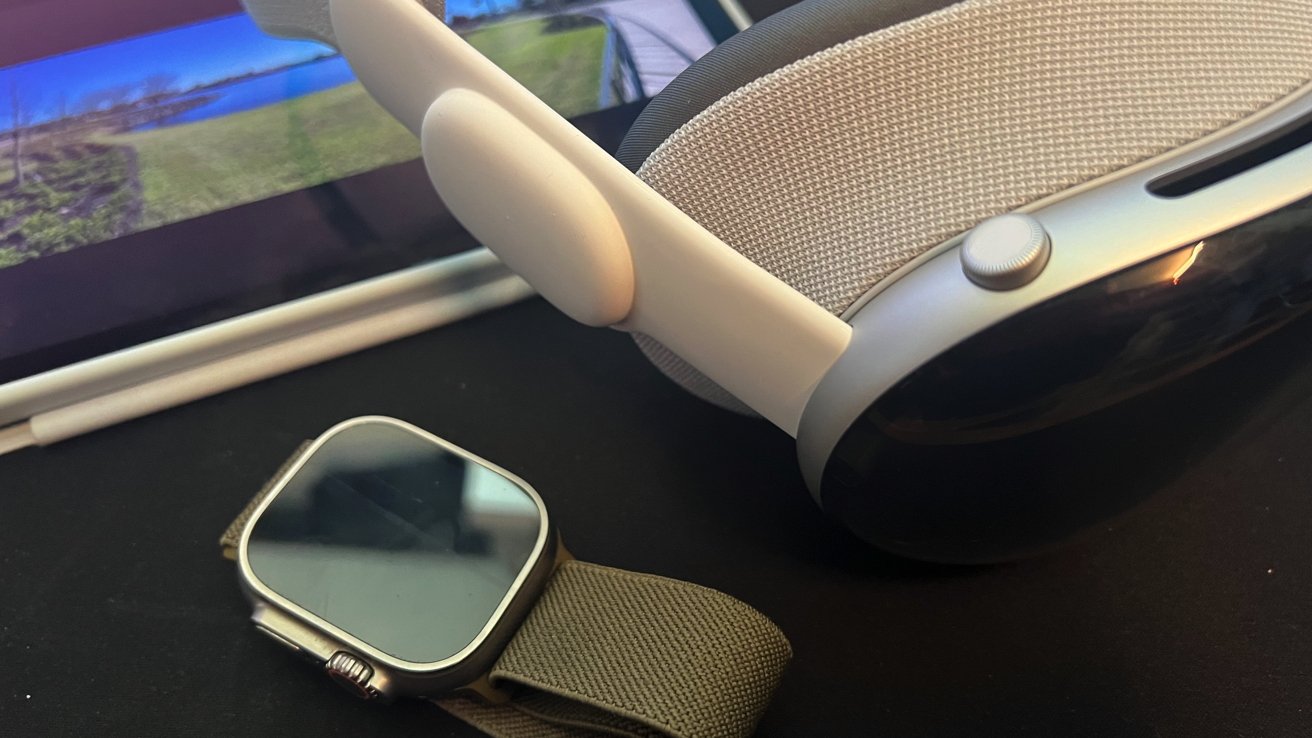
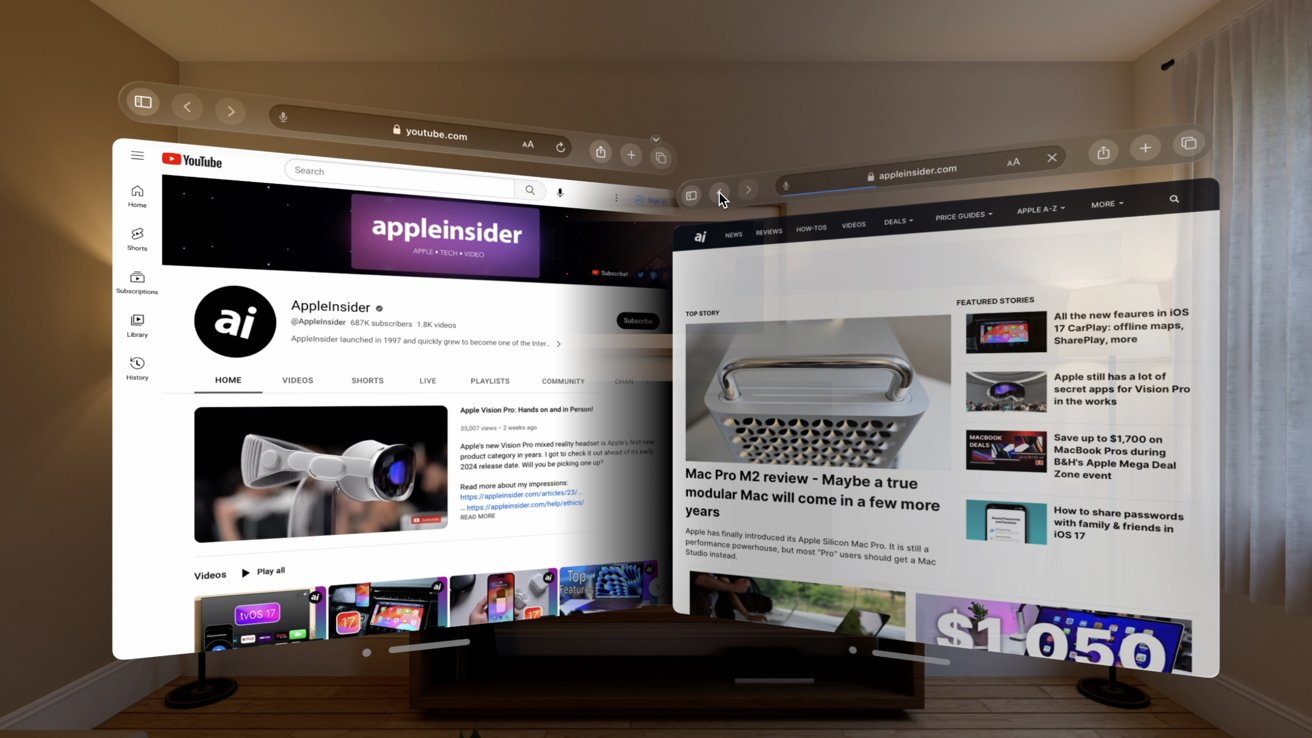
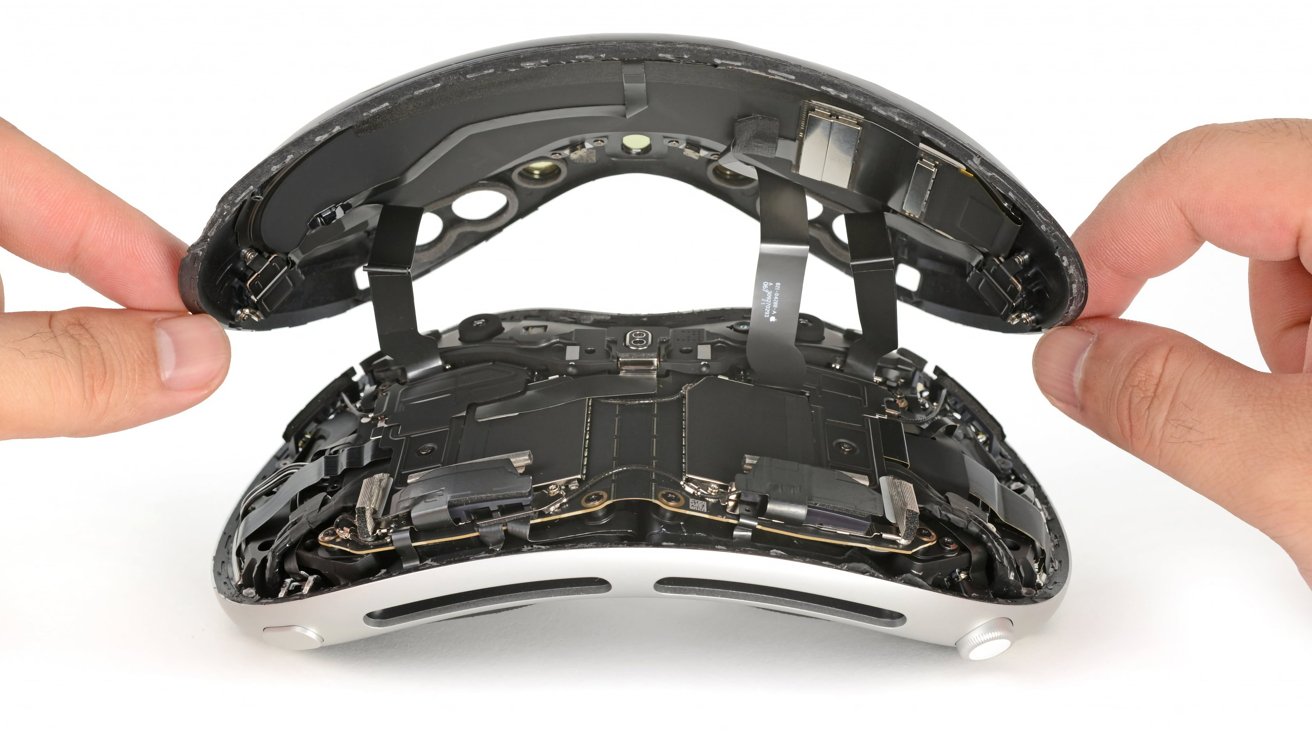
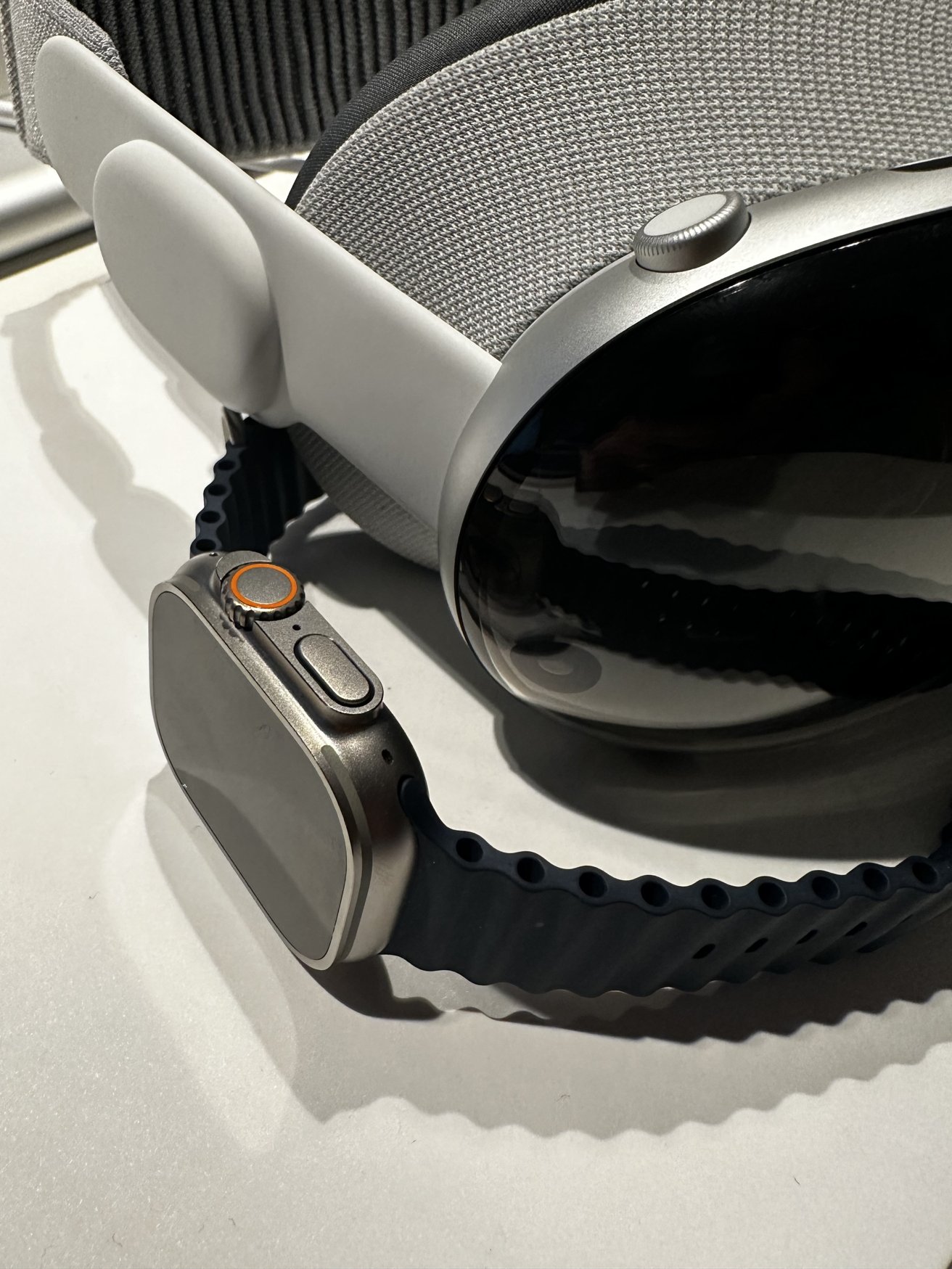
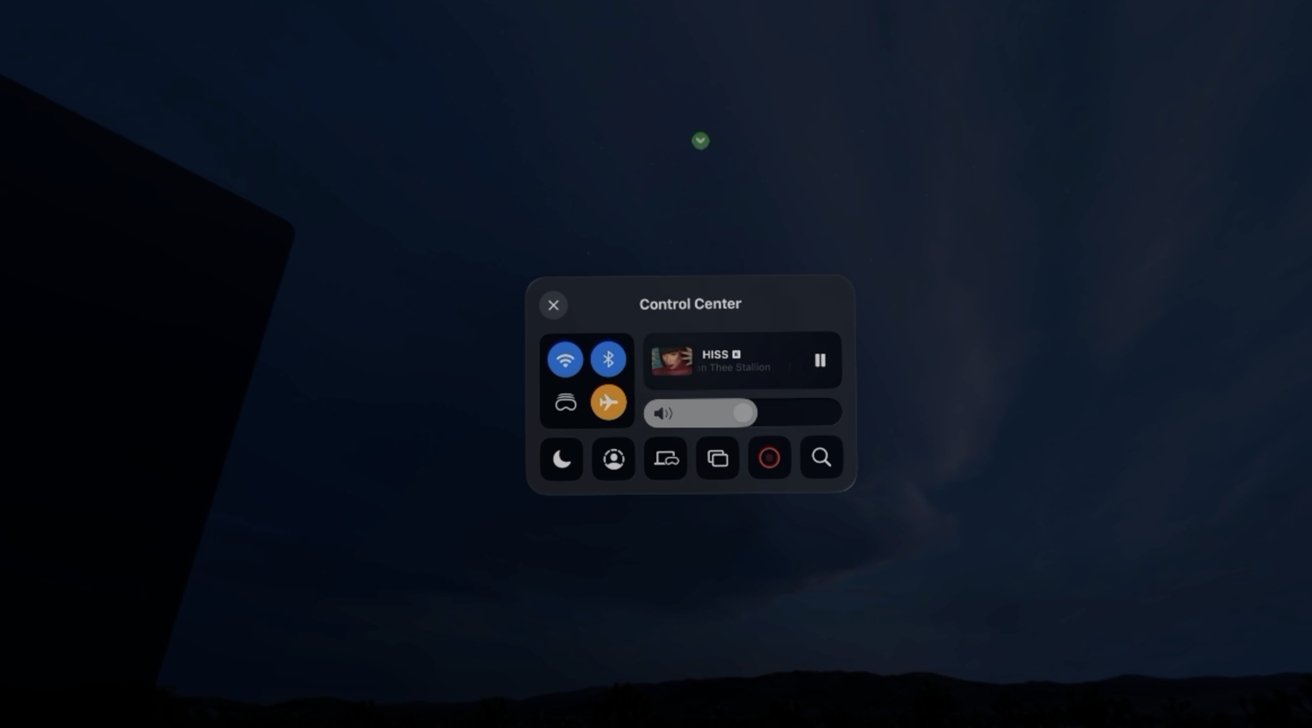
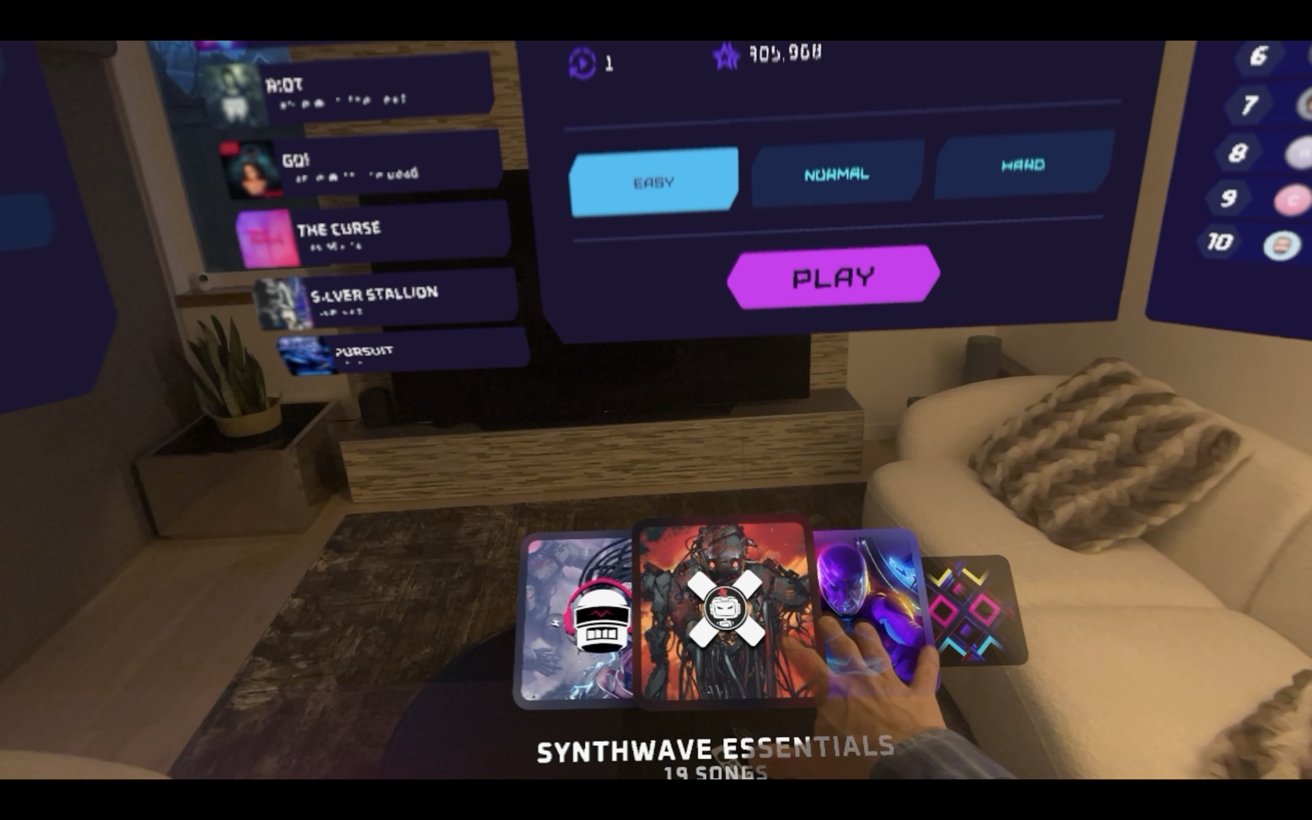
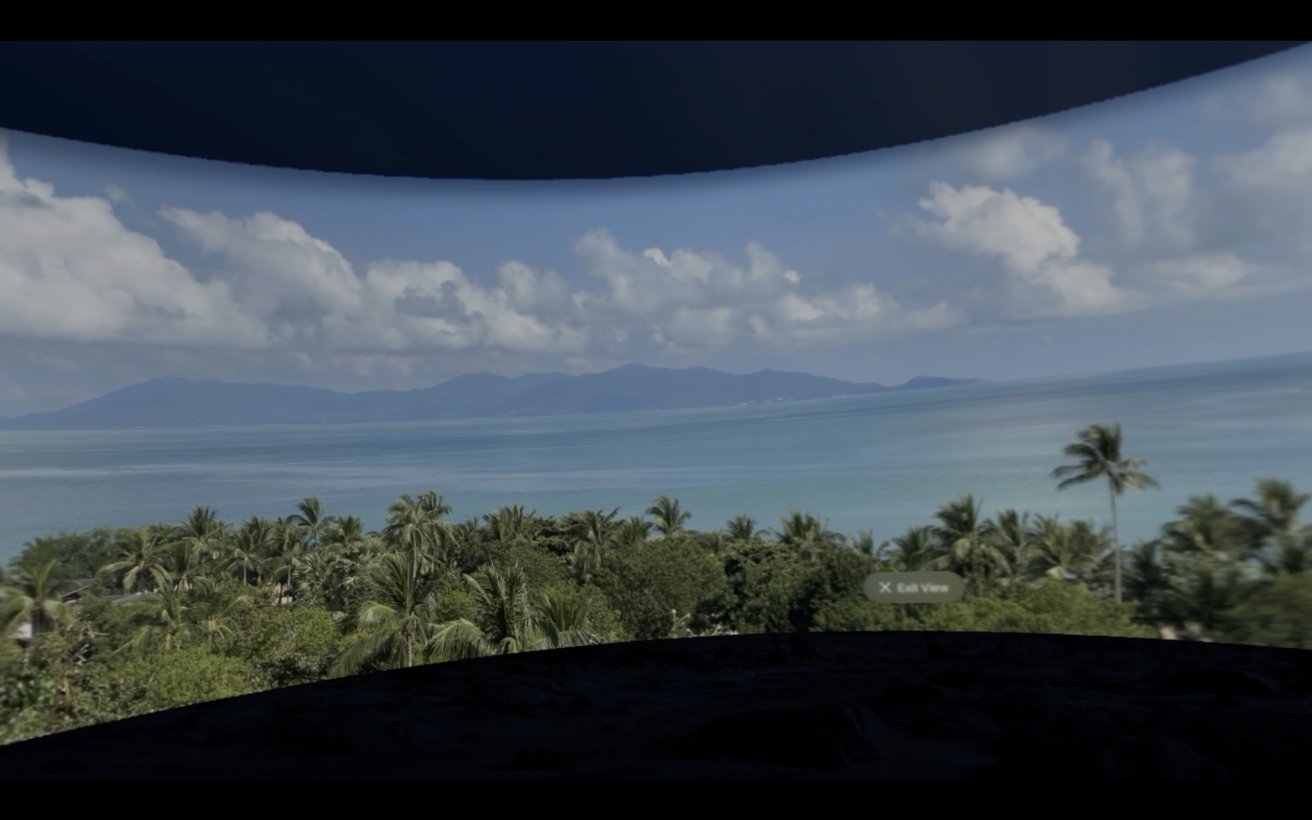
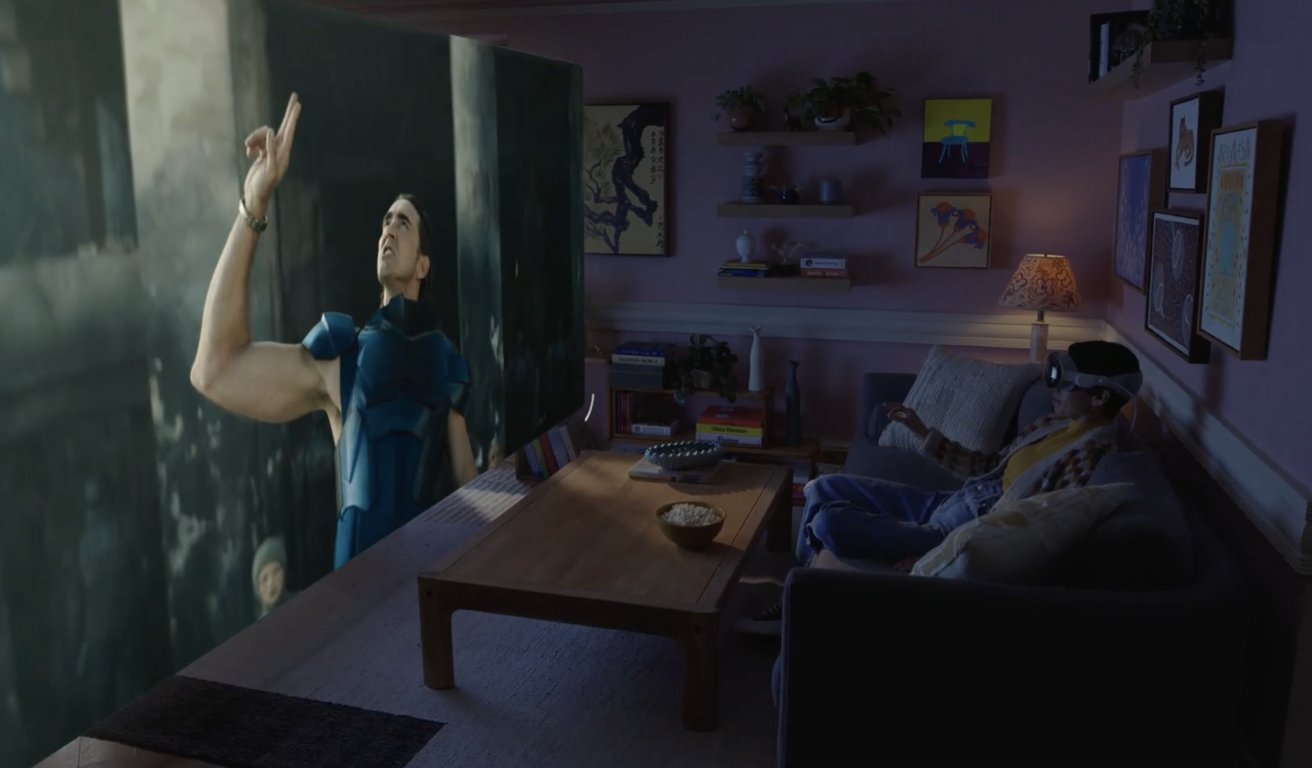
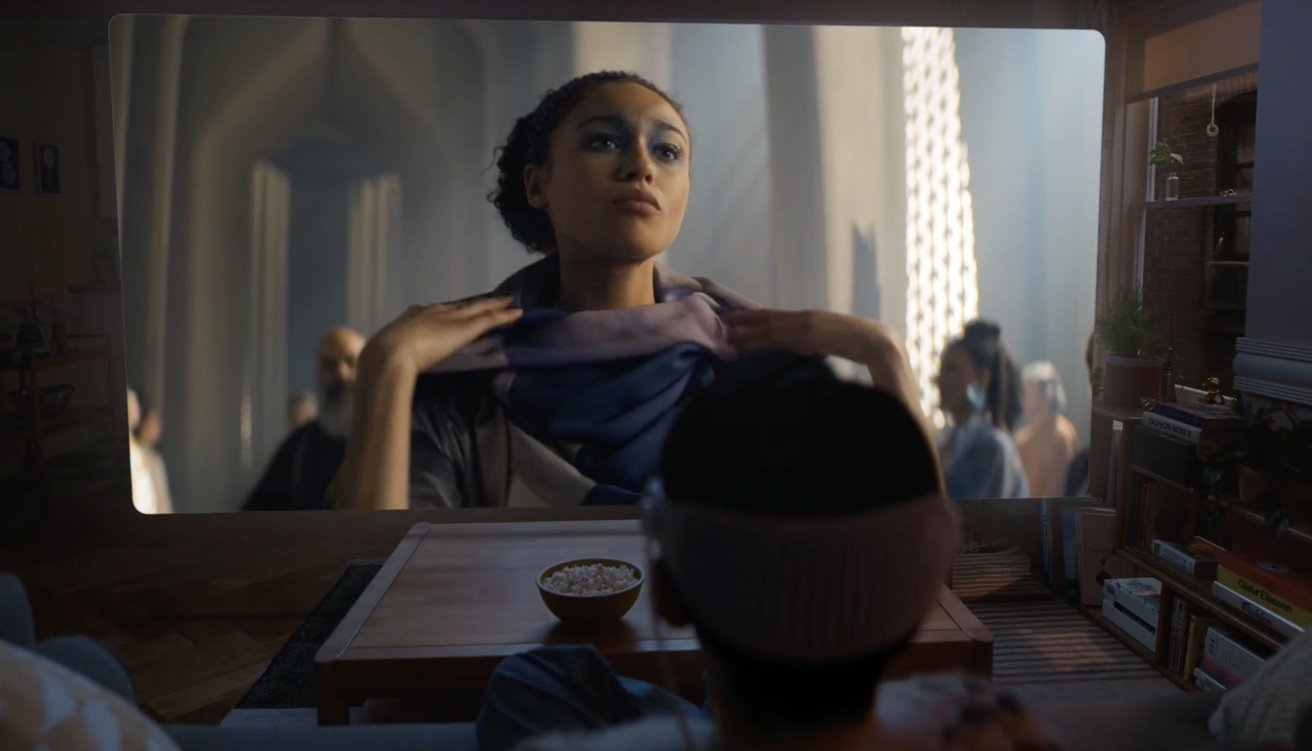
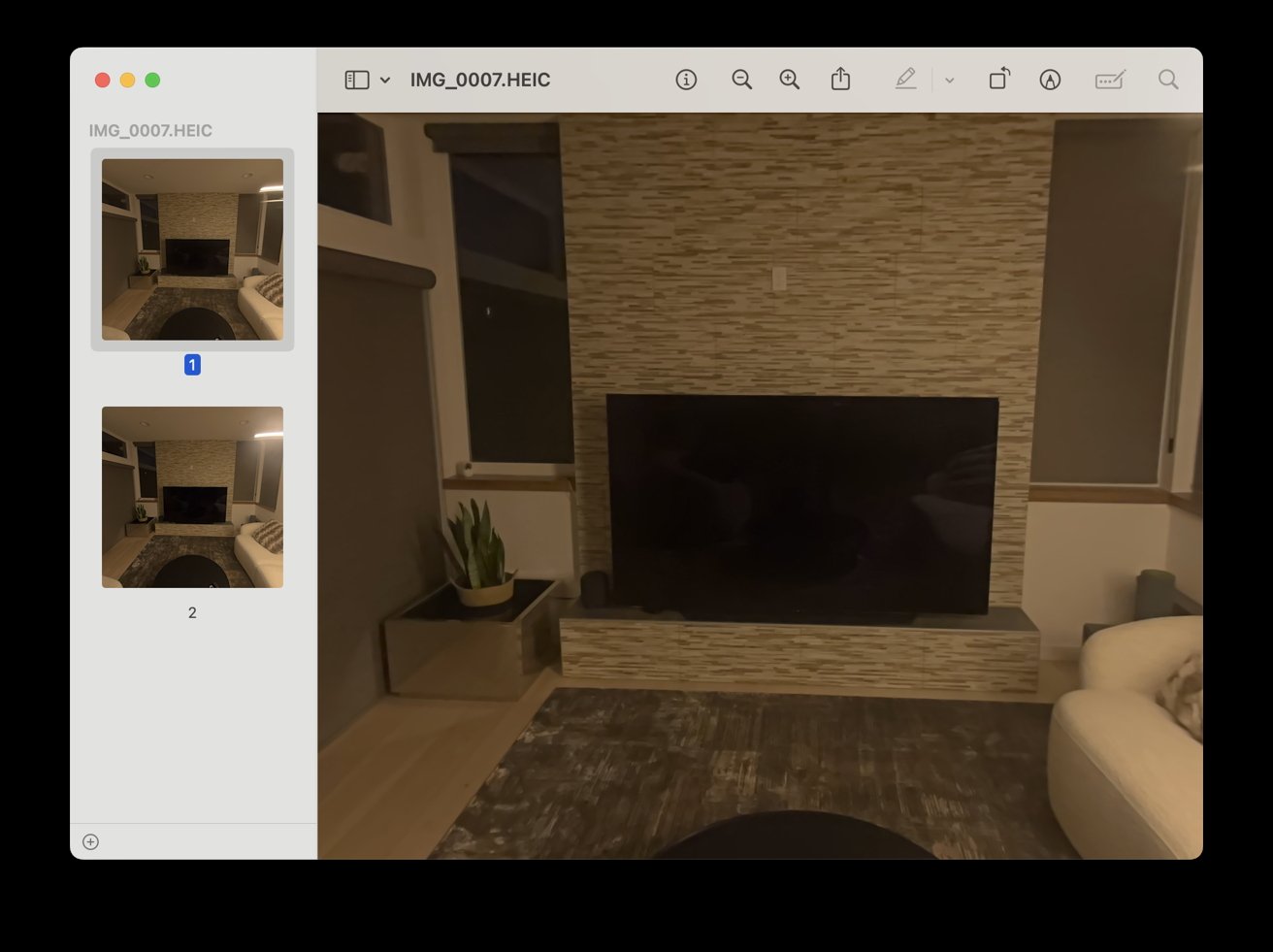
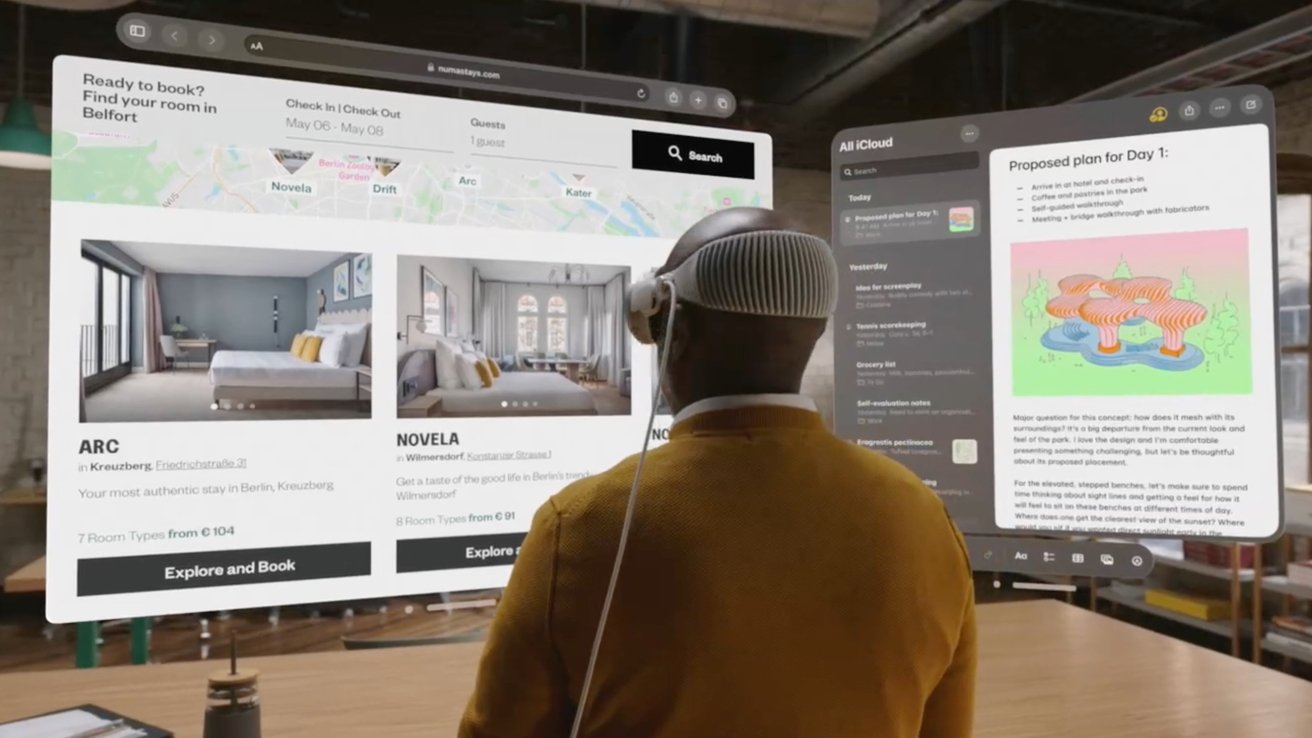
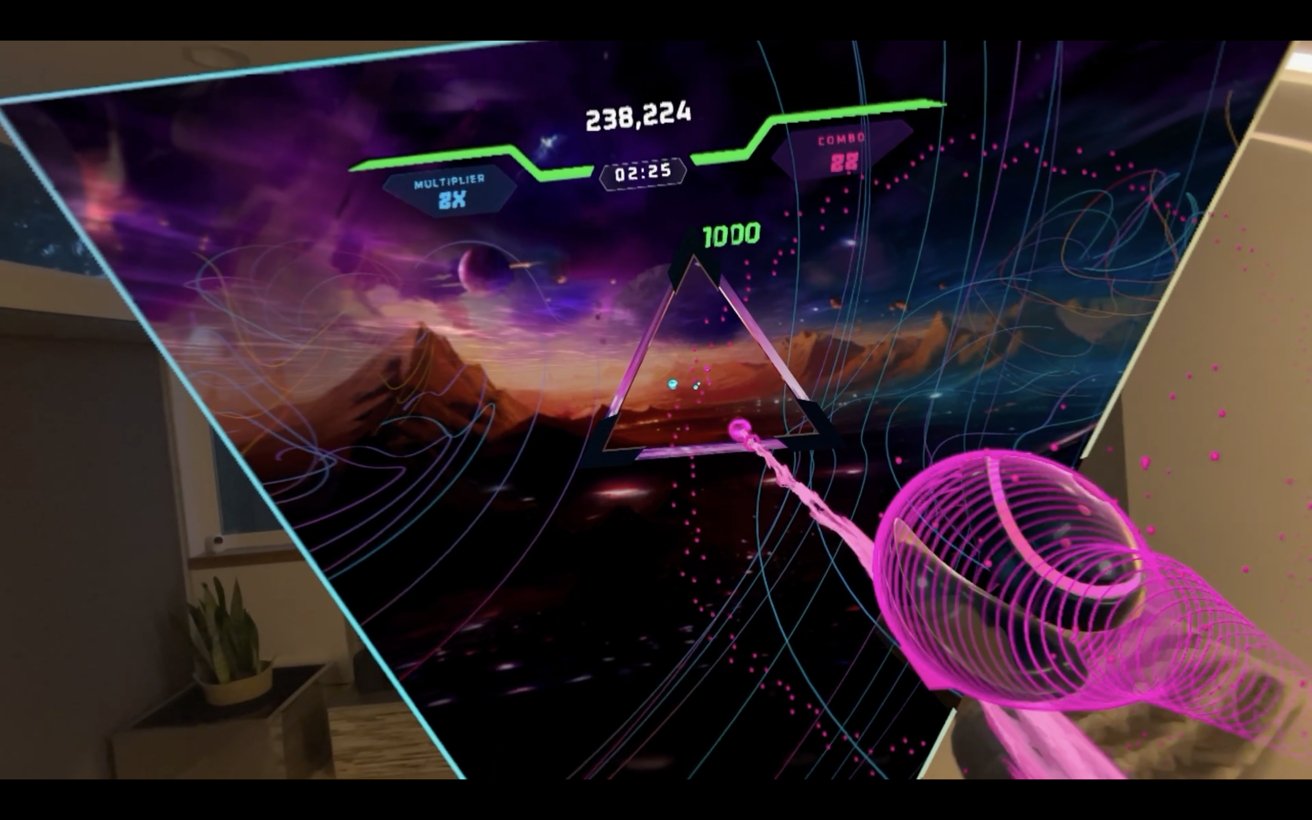







-m.jpg)






 Andrew Orr
Andrew Orr
 Malcolm Owen
Malcolm Owen
 William Gallagher
William Gallagher

 Wesley Hilliard
Wesley Hilliard







-m.jpg)




27 Comments
Great article DED, though 3D and immersive content (agree much more amazing than the 3D) will be available via AppleTV and Disney, I worry about influencer content being held back by the monopolies of Meta, YouTube and TickTock.
I would like to hear any thoughts you have about this issue.
Can we get an article summary that sticks to the headline rather than retreading 20 years of history?
Love the motorcycle analogy.
I would love to immerse myself in 2001: A Space Odyssey, especially the final gateway and Victorian scenes, and The Shining.
So many logical fallacies, so little time. I’m glad DED is still getting paid by the word.
Wanna know....the porn industry...theyll make the leap...